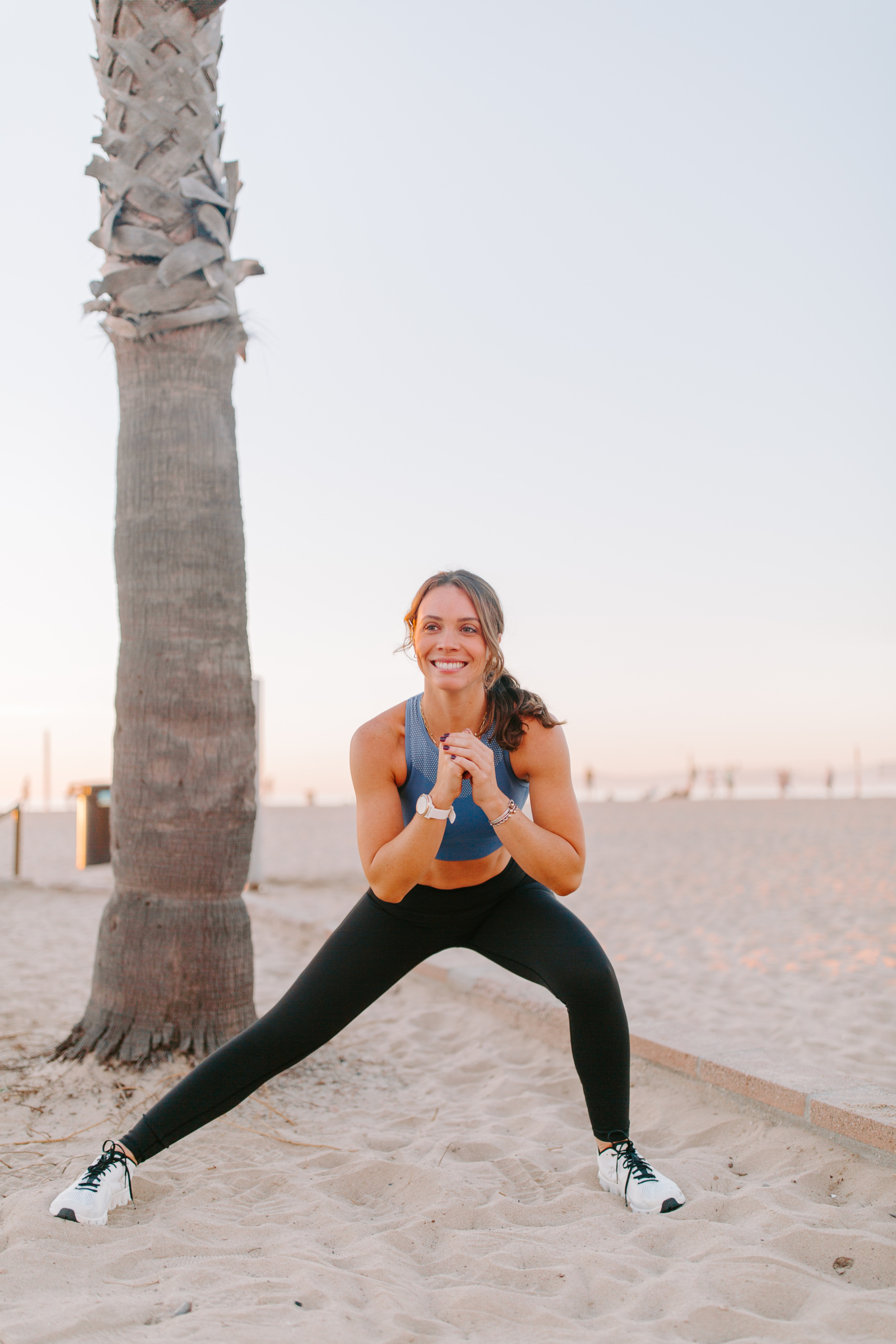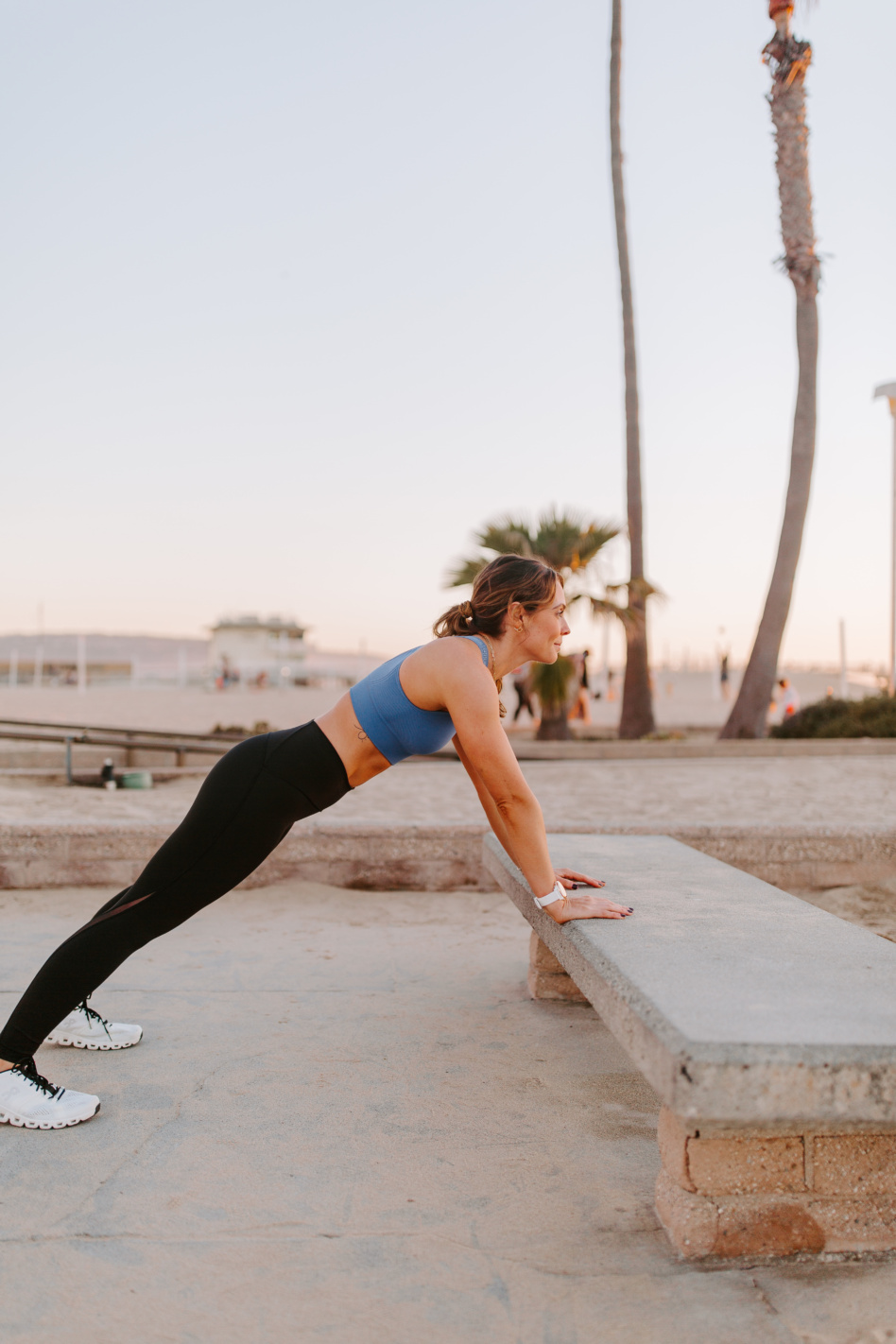
You’re probably thinking, “Is it really necessary to warm-up before every workout?” The short answer: YES! Warm-ups are not just ideal, but essential. And for more than one reason!
Warming-up before a workout doesn’t have to take long, but it does need to exist. Allowing a few minutes to warm-up before any type of workout can reduce your risk of injury, minimize muscle soreness/stiffness on the following days, and more!
Why Warm-Ups are Necessary
Warming up the mind and body will allow you to perform the best workout possible, while setting you up for a speedy and successful recovery. These are just a few important benefits of warming up pre-workout.
1. Mental Preparation
Actively warming up the body pre-workout is the best way to prepare your mind. It helps get you in the right headspace, so that you can effectively focus on your exercises, while appropriately challenging and pushing yourself.
2. Increases Circulation & Heart Rate
An adequate warm-up gets the blood pumping, which prepares it for the workout to come.
3. Increase in Body Temperature and Blood Flow
Starting a workout cold is no way to workout. To get the most out of your workout (for strength, mind, mobility, and more), it’s important to increase your body temperature during the warm-up. This also helps improve your metabolic rate, AKA how quickly you burn calories.
4. Improves Performance
Warm-ups set the stage for a successful workout. They help prime the muscles to grow stronger, quicker, and more flexible over time.

Types of Warm-Ups (Dynamic VS. Static)
There are two main types of warm-up methods: dynamic and static. A dynamic warm-up is a form of active movement. It isn’t about simply holding a stretch, but rather taking your body through a specific range of motion to better prepare your body for the workout or sporting activity. Alternatively, static stretching consists of holding a stretch for an extended period of time.
While both types serve a purpose, an effective warm-up should primarily focus on dynamic movements, instead of static stretches. Ideally, static stretches will be incorporated at the end of the workout.

How to Perform a Dynamic Warm-Up
A dynamic warm-up should include all of the following components:
1. Light Aerobic Warm-Up
A light aerobic warm-up is a low intensity activity, like a walk on the treadmill, gentle ride on the stationary bike, or stroll on the elliptical. This should take no more than 5-10 minutes, as you just want to get your blood pumping and increase your body temperature.
2. Soft Tissue Work
Use a foam roller, hand roller, or lacrosse ball to complete your soft tissue work. Move from upper body to lower body, targeting the specific muscles you’ll be working that day. Be gentle and move slowly.
3. Dynamic Warm-Up Exercises
After light aerobic activity and soft tissue work, it’s time to officially start the dynamic exercises. A few of my favorite dynamic exercises, include:
Cat Cow
Bird Dog
Hip Flexor Pulse
Lunge with Rotation
T-Spine Rotation
Single Leg Toe Touch
Allow yourself 10-15 minutes to complete your warm-up from start to finish. Again, you shouldn’t be spending too much time on your warm-up- just enough to effectively prepare the mind and body.
At the end of the day, warming-up isn’t optional. Whether you’re a marathon runner, strength competitor, neighborhood walker, or at-home boot camper, warm-ups serve an important purpose. They will improve performance, protect against injury, and prepare you for the best workouts possible.






